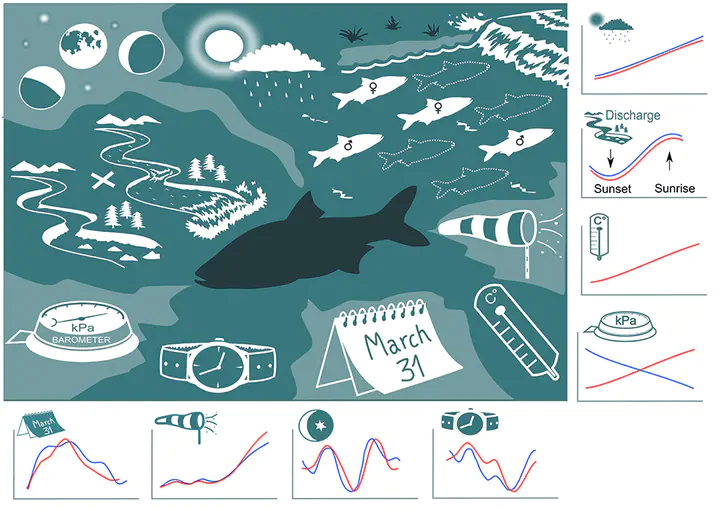Diverse environmental cues drive the size of reproductive aggregation in a rheophilic fish

Abstract
Background Animal migrations are periodic and relatively predictable events, and their precise timing is essential to the reproductive success. Despite large scientific effort in monitoring animal reproductive phenology, identification of complex environmental cues that determine the timing of reproductive migrations and temporal changes in the size of reproductive aggregations in relation to environmental variables is relatively rare in the current scientific literature. Methods We tagged and tracked 1702 individuals of asp ( Leuciscus aspius), a large minnow species, and monitored with a resolution of one hour the size of their reproductive aggregations (counts of sexes present at the breeding grounds standardized by the sum of individuals in the season) over seven breeding seasons using passive integrated transponder tag systems. We examined the size of reproductive aggregations in relation to environmental cues of day number within a reproductive season (intra-year seasonality), water temperature, discharge, hour in a day (intraday pattern), temperature difference between water and air, precipitation, atmospheric pressure, wind speed and lunar phase. A generalized additive model integrating evidence from seven breeding seasons and providing typical dynamics of reproductive aggregations was constructed. Results We demonstrated that all environmental cues considered contributed to the changes in the size of reproductive aggregations during breeding season, and that some effects varied during breeding season. Our model explained approximately 50% of the variability in the data and the effects were sex-dependent (models of the same structure were fitted to each sex separately, so that we effectively stratified on sex). The size of reproductive aggregations increased unimodally in response to day in season, correlated positively with water temperature and wind speed, was highest before and after the full moon, and highest at night (interacting with day in a season). Males responded negatively and females positively to increase in atmospheric pressure. Conclusion The data demonstrate complex utilization of available environmental cues to time reproductive aggregations in freshwater fish and their interactions during the reproductive season. The study highlights the need to acquire diverse data sets consisting of many environmental cues to achieve high accuracy of interpretation of reproductive timing.